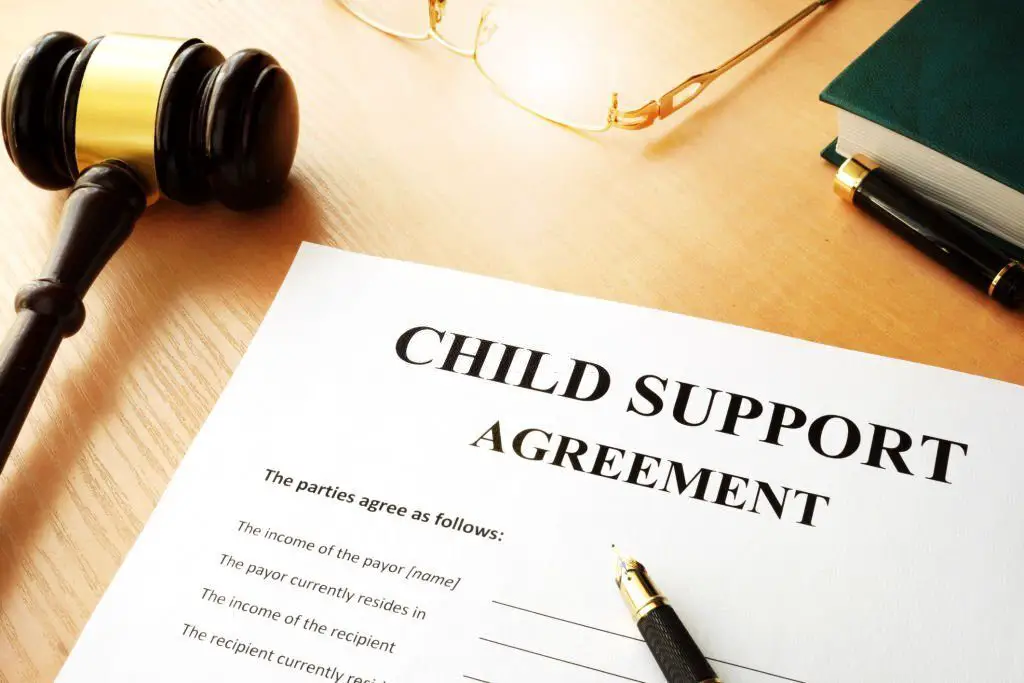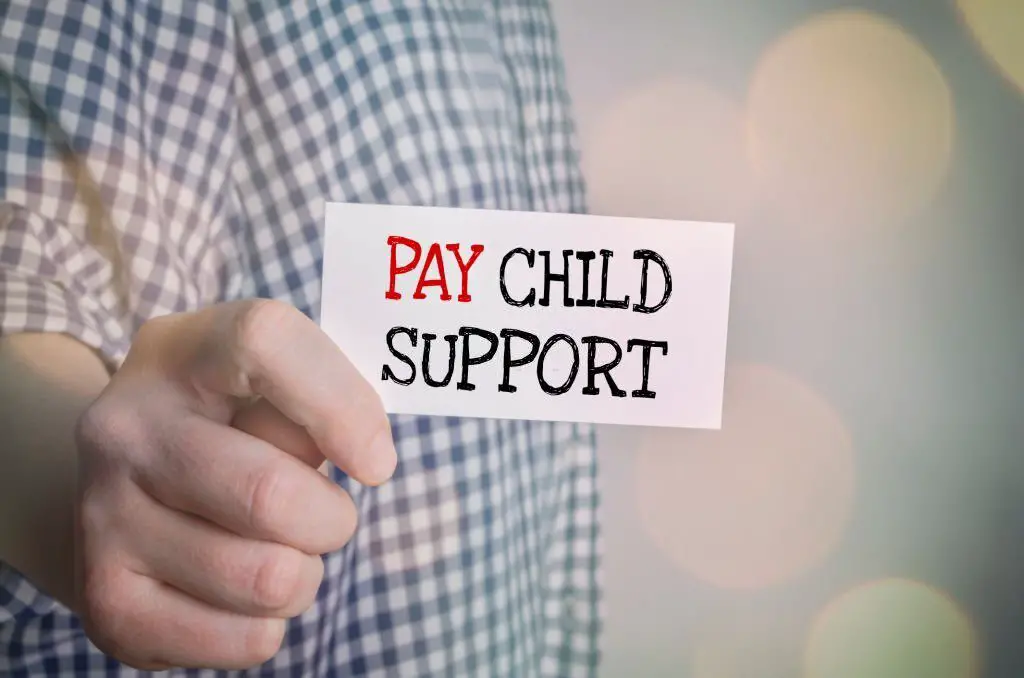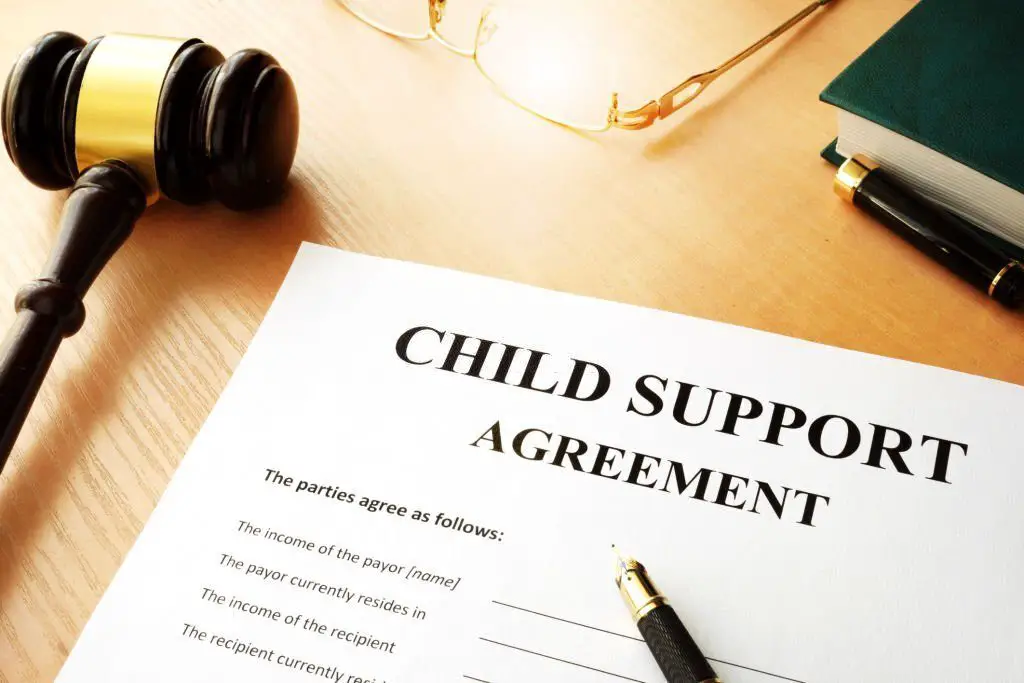
The technicalities of child support may be a delicate subject and can create confusion during a divorce. It’s critical to be aware of the realities surrounding child support.
Every parent is obligated by law to provide for their children’s fundamental requirements, such as food, clothes, housing, and health care. When parents are divorced, separated, or never married, child support is designed to ensure that each parent contributes a fair amount of monetary support for their children.
Although the basic idea appears easy, understanding the complexities and estimating the amount of child assistance parents need to pay can be difficult. Here’s a rundown of how the child upkeep allowance process operates and what you need to grasp to stay on top of your responsibilities.
Child Support Meaning
What is child support? It is money paid on a regular basis by a man or woman to a former spouse in order to maintain their children who are minors, following a divorce or separation, or as otherwise required by law.
Both parents are required by law to care for their children in the United States. If one parent does not have full custody of the child, they are lawfully obligated to pay money to the other parent to use in raising the child until he/she reaches the age of majority.
Child Support Laws in the United States
Title IV-D of the Social Security Act of the United States mandates that child support guidelines be applied uniformly across a whole state, but every state is free to choose its own method of calculation.
45 CFR 302.56 mandates each state to adopt and publish a presumptively correct (but rebuttable) guideline, as well as to revise the guideline every four years.
As a result, most state jurisdictions have created their own “Child Support Guidelines Worksheet,” which is used by local courts and state Child Support Enforcement Offices to determine the “standard calculation” of support in that state.
In any given instance, courts may opt to differ from this typical calculation. The United States has child support recovery reciprocity arrangements with a number of nations and is a signatory to the Hague Maintenance Convention 2007.
Models of Child Support Guideline
There are three basic models of child support guidelines adopted by all the states in determining the amount to be ordered. These include:
1. Income Shares Model
2. Percentage of Income Model
3. Melson Formula
What Purpose is Child Support Used for?

Purposes of Child Maintenance
The purpose of child support is to guarantee that both parents, irrespective of their marital status, do everything they can to financially support their children. Though child maintenance money is for the child, it is the custodial parent’s responsibility to use it to meet the child’s needs.
A judge or agency may utilize a state calculator or other state-specific rules to compute child support for a household with separated or unmarried parents, depending on where you live. The goal of calculating child support by a judge or a child services agency is to pay for the kid’s basic necessities.
A custodial parent will have to use child maintenance to assist with those fundamental needs at the very least. Besides basic needs, support may be used to pay for various costs involved with bringing up a child, depending on the circumstances:
- basic needs (food, clothing, transportation, and housing)
- the child’s school fees
- Child care
- health care
- additional child care expenses (extracurricular activities, summer camps, uniforms, extraordinary health costs, etc)
How Long Child Support Lasts
Child support in most states stops when the child dies or marries. In certain instances, such as if the child is still living at home and attending high school, or if the child has special needs, certain jurisdictions permit support to extend beyond the age of 18. It will last as long as the following is the case:
- Active Duty in Military: Your child joins the military and is called to active duty (applies to most states; you will also have to file a motion with the court)
- Reaches Age of Maturity: Child support in most states ceases when a child reaches the age of 18 or graduates from high school, whichever comes first. In certain states, the legal drinking age is 21. Because the age of maturity varies so much from state to state, it’s crucial to examine your state’s legislation to discover which age applies and whether there are any additional situations that might allow child support to be extended.
- Child Becomes Emancipated: The phrase “emancipation” serves as a legal process by which a minor becomes financially self-supporting and no longer receives financial assistance from his or her parents. When a minor marries, enters the military, leaves home, or becomes self-supporting before reaching the age of maturity, he or she is considered “emancipated.” A parent is no longer obligated to contribute child support in such circumstances.
- Termination of Parental Rights: Adoption or another legal process terminates your parental rights.
Impact of Child Custody on Support

Custody has a significant impact on maintenance
When a parent has physical custody of the children after a divorce, that parent’s responsibilities are met by becoming the custodial parent. To meet their non-custodial parent’s financial obligations, the other parent makes a child support payment.
The amount of child support that each parent is obligated to pay is normally determined by the court in most circumstances of shared custody. It considers how much each parent contributes to the pair’s combined income and how much time each parent has actual custody of the children.
Impact of Alimony on Child Support
Most courts consider child upkeep to be more significant than alimony and calculate child support first before deciding on alimony on what’s remaining. Its requirements will never be decreased to make room for spousal support payments.
It’s worth noting that if you pay spousal support for a different reason, such as a first marriage, it could affect your child support in some way because it reduces your income, but the judge will decide on a case-by-case basis.
In the perspective of the law and the court, spousal maintenance as a responsibility to your spouse is less relevant. If you only have enough money to pay one form of support, it’ll be to the children.
Obligations For Unmarried Parents
Irrespective of their marital status, non-custodial parents are compelled by law to provide support to their custodial parent counterparts till their minor children reach the age of 18. If the minor kid is an unmarried, full-time high school student at the age of 18, the child support obligation remains until the minor child reaches the age of 19 or finishes their senior year of high school, whichever comes first.
In common-law, relationships and married couples have certain similarities. However, as previously noted, unmarried couples are not entitled to the same legal protections as married couples. Divorce laws often do not apply to such relationships, even if children are born into them.
Marriage has no bearing on the need to support a child. You have a responsibility to financially support every child you parent if you are a parent. Though the definition of a parent varies by state, your parental responsibilities are legally defined in one of two ways:
- By inviting your child into your house and caring for them as if they were your own, you demonstrate that you are a parent.
- A paternity test determines your parentage.
A Stepfather’s Financial Liability
In most cases, a stepparent is not obligated to pay child support for a spouse’s children from a previous relationship. The amount of money a stepparent makes is frequently ignored by the courts. Nevertheless, depending on the details of the case, the earnings of a stepparent might make a considerable difference in the amount of support that must be provided to a biological parent.
To begin with, because child support is normally calculated as a proportion of a parent’s net income, a parent’s net income may increase after marriage due to tax benefits.
A court can also consider other circumstances, such as a remarried spouse’s lower cost of living while reducing a child maintenance award. Finally, while a stepparent cannot be obliged to pay it or have their income garnished, if their spouse is paying child support, they are contributing as well, even though they’re not legally responsible.
How to Apply For Child Support Services

There are various ways to apply for Child Support Services
You can request child support services in a range of methods, but the easiest and quickest approach is to do it online. There are several portals for applying for it in different states. Whether or not there is a court order for child upkeep, either parent or legal guardian can open a child support services account.
In most states, you’ll need to provide information about yourself as well as the other spouse in order to start a child support case.
Make sure to include as much information about yourself, your ex-spouse, and your child(ren) as possible. The more information you offer, the better the services team will be able to assist you.
Here are some examples of what kind of information you should provide:
- The number assigned by the Social Security Administration
- The number on your driver’s license
- Number to call
- previous work experience
- Contact information for other options
- Information about the child support lawyer (if you have one representing you)
Means of Applying
Depending on the facilities available in your state, you can apply for child support online, in person, or via mail:
1. Application Online
To submit an online application for child services, you’ll have to visit the child support services website for your state. You will then be directed to a secure web [age where you can provide all of the information needed to complete an application, it will then be sent to the agency instantly.
You can also attach supporting documentation to your application. You can get the website by calling the child support number.
2. Applying In-Person
To apply in person, you must get or download the Application for Child Support Services Packet forms. Then you fill out the documents and send them to your local agency to be processed.
Walk-in applications are sometimes offered at your county and local child support offices.
Child Support Services Packet
The following forms may be included in the self-service application packet for child support services:
- Participant Responsibility to Protect Confidential Information
- Notice of Child Support Services Program
- Simplified Application for Child Support Services
- Confidential Parentage Questionnaire
- Request for Support Services
- Family Violence Questionnaire Cover Letter
- Family Violence Questionnaire
- Visitation Verification
- Health Insurance Information
- Income and Expense Declaration
- Declaration of Support Payment History
- Instructions Regarding the Use of Translated Court Forms
- Complaint Resolution – State Hearing Information
3. Applying by Mail
If you are unable to apply online, the Child Support Services Division in your state can provide you with a paper application. You will need to call their official child support number or request the form online, which they will mail over to you. Keep in mind that applications sent can take longer to process than those submitted online.
How to Make Payment

Ways to Pay Child Support
Though income withholding is the most common method of collecting support, there are other options. These methods do not substitute income withholding, but they might be helpful if you are self-employed, between employment, or want to make a larger payment toward past-due support.
Regardless of whatever option you choose, all support must be paid through the proper state agency. This is the only way to ensure that your payments are credited to your account.
These options include debit or credit card, mail, cash or money order, or auto draft from a bank account.
To make support payments on someone else’s behalf, you’ll need:
- The case number for child support (s)
- Name and address of the support-paying parent
How Child Support Amount is Determined
Every state does have a calculating formula, and judges utilize these formulae to determine the amount of child support to be paid in each case.
The most important component in calculating child support is the amount of money earned by the parents. Some states examine both parents’ income, while others solely consider the non-custodial parent’s income. Another crucial aspect in most jurisdictions is the percentage of time each parent spends with their children.
In defining income, Some states utilize gross income, while others use net income, and some include gifts, bonuses, and overtime while others do not. If a parent earns a lot of money from investments, it may be recognized as income when calculating it.
Judges do, however, have the discretion in specific situations to award support that does not follow the formula strictly if it is justified. The reasons for differing from the rules are usually spelled out in a state’s divorce laws. Prior to actually reaching a child support ruling, courts typically need each parent to fill out a document that explains their financial circumstances, including outlines of their monthly income and expenditure.
Irrespective of how much discretion courts have under the law, most states’ guidelines specify considerations that judges must consider in determining who pays how much support. Typical examples of these factors are:
- alimony or child support received by either parent from a previous relationship
- if either parent is paying alimony or child support from a prior marriage
- the standard of living of the child before the separation or divorce
- if either parent has children from a previous (or subsequent) marriage
- the ability of the paying parent to pay
- Which parent pays for health insurance, and how much does it cost?
- Which parent is responsible for daycare expenditures, and how much does it cost?
- if either parent must pay union dues or has other sums withheld from their pay
- the income and needs of the custodial parent
- the children’s ages
- the child’s needs
- if either parent has intermittent income, like bonuses or commissions
- recent W-2 tax document
- incentive compensation, severance pay, or other lump-sum payments, and
- if either parent has a new partner or spouse who helps pay for the household.
Why Judges Set Support Above or Below the Guidelines
Because judges are permitted to depart from the rules when there are good grounds, you’ll have to tell the judge if you believe the guidelines shouldn’t apply in your case for whatever reason.
Make preparations to exhibit to t the judge your position’s documentation. A budget that shows all of your child-related expenses will inspire the judge with your concern for their needs and the gravity of your situation.
Here are several scenarios in which a judge may decide to set assistance at a higher or lower level than the guideline amount:
- The noncustodial parent has larger financial resources.
- A youngster has unique requirements or interests (unusual medical, psychological, or educational)
- The recommended amount is higher than what is required.
- The paying parent is avoiding his or her responsibilities.
- The paying parent is unable to pay.
Consequences of Withholding or Nonpayment

Wage Garnishment is a major consequence of not paying child support obligations
When a mother or father refuses to pay court-ordered child support or does not pay her child upkeep payments on time might be a huge issue. If you do not pay your support responsibilities, you are inviting legal intervention into your life and finances.
The amount and schedule of payment, as well as any other factors that may lead to realigning your obligations, are all defined in the court order made as part of your divorce and custody process.
Failure to adhere to the child support timeline is regarded as violating a court order. Following are some of the possible outcomes:
- Probation for a short period of time
- Wage garnishment
- Your tax refund can be intercepted.
- Your property may be seized.
- Your business and/or driver’s license may be suspended.
How to Enforce Child Support
If a parent who is due to pay child maintenance under the provisions of a court or gov’t agency order stops paying, you have legal options. District attorneys (D.A.s) or state attorneys must assist a parent in collecting it under the Child Support Enforcement Act of 1984.
Child support orders can be enforced by intercepting tax refunds under federal law. Other ways of enforcement include garnishing wages, confiscating property, or removing the paying parent’s driver’s license in some states.
How to Get Child Support Arrearages Dismissed
There are measures you can take if you have been informed by a judge or the District Attorney’s office that you are owing child support liabilities and want to learn how to get child support arrears erased or reduced. These include:
1. File an appeal: A petition to have your child support recalculated by a judge.
2. Agree on a New Child Support Amount: Try to come to an agreement with your ex on a new amount of child support.
3. Prove You Have Custody of the Child: If you have custody of the child, then prove it.
4. Petition to Set Aside the Court Order: if there are reasons and you feel the need to, file a motion to set aside the court order.
5. Request a Payment Plan from the Court: This should represent what your current salary allows you to pay, in order to to reduce arrears.
6. Adjust your current child support: if it was computed incorrectly.
How to Modify Child Support Order

These are ways to Modify Child Support Order
You and your kids’ other parents may agree to change an existing child support order, but the planned amendment will not be implemented until it is approved by a judge.
You’ll have to submit a formal application (in the form of a motion) in the same court where the initial decree was granted if you and your ex can’t agree on a change. Your request will then be decided by a court.
As a rule of thumb, judges will not consider changing previous orders except if the applicant’s parent can show that circumstances have changed significantly since the original order was made. This regulation protects courts from being overloaded by frequent and recurrent amendment requests.
Modification orders are usually supported by the following types of changes:
- a medical emergency involving the child
- the temporary inability of the paying parent to pay (example, due of illness or an additional financial burden such as loss of a job or a medical emergency)
- the temporary financial or medical difficulty of the receiving parent
- either parent’s new, increased income as a result of their remarriage
- a change in the job position of either parent
- either a parent’s illness, or
- a change in the child’s requirements
Frequently Asked Questions
Here are answers to the most frequently asked questions regarding child support
Is Child Support Tax Deductible?
This question is always answered with a simple No. Child support is regarded as “tax-free.” This is because it is deemed payment for the child’s needs. As a result, if you’re the Payor, they’ll be regarded as if you paid them personally.
The only exception is that instead of making expenditures yourself, you’re sending your ex money to meet your child’s expenditures. They are not taxable since they are regarded as personal costs for tax purposes.
Can Parents Make Their Own Child Support Agreement?
They are capable of doing so. However, the regulations in your state almost probably need a judge to approve the agreed-upon amount of child support. Judges are obligated to prioritize a child’s best interests, and they will go to any length to ensure that youngsters are not disadvantaged.
This is why, except in rare circumstances when there’s a legitimate reason—such as when a noncustodial parent is absolutely unable to work due to a physical condition—judges will seldom approve an arrangement that provides for no child support.
If you’re trying to reach an agreement with the other parent but are having problems resolving your disagreements, mediation may be a good option.
What Is a Cost-of-Living Adjustment (COLA) Clause for Child Support?
A COLA clause in a child support agreement stipulates that payments will automatically increase on a set timetable, at the same rate as the cost of living increases (as determined by an economic indicator such as the Consumer Price Index). This removes any claims for changes based purely on cost-of-living increases. COLA provisions are required in several states for child support orders.
State Child Support Laws and Guidelines
A - Alabama | Alaska | Arizona | Arkansas
C - California | Colorado | Connecticut
D-H - Delaware | Florida | Georgia | Hawaii
I - Idaho | Illinois | Indiana | Iowa
K-L - Kansas | Kentucky | Louisiana
M - Maine | Maryland | Massachusetts | Michigan | Minnesota | Mississippi | Missouri | Montana
N - Nebraska | Nevada | New Hampshire | New Jersey | New Mexico | New York | North Carolina | North Dakota
O - Ohio | Oklahoma | Oregon
P-S - Pennsylvania | Rhode Island | South Carolina | South Dakota
T-U - Tennessee | Texas | Utah
V-W - Vermont | Virginia | Washington DC | Washington State | West Virginia | Wisconsin | Wyoming




